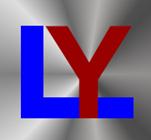
Laboratory Facilities

The mmi CellManipulator is an optical trap that enables precise, contact free manipulation of microscopic particles. It is capable of manipulating micrometer-sized dielectric particles, living cells, or subcellular organisms by exerting pico Newton forces via a highly focused laser beam. The beam is focused by sending it through a microscope objective. The narrowest point of the focused beam, known as the beam waist, contains a very strong light gradient. Dielectric particles are attracted along the gradient to the region of brightest light, the center of the beam. Using an infrared laser an invisible optical trap is created.
The mmi CellManipulator traps particles using a high-quality, Nd:Yag infrared laser with a wavelength of 1064nm and 3W maximum power. Specially designed optics focuses the laser beam through an additional port without impairing any functionality of the inverted microscope. In addition, simultaneous use of phase contrast, DIC, fluorescence imaging, etc., together with trapping and force measurement is possible.


4 Quadrant Detector (QD) based positioning measurement system (MBPS) based positioning measurement system enables precise nanometer scale position detection and force measurement in pico Newton scale. The dual head capacity enables measurement of 2 objects simultaneously.
Optical Tweezers in combination with the extreme sensitive quadrant detector technology, are capable of the manipulation and detection of sub-nanometer displacements for sub-micrometer dielectric particles.
The optical tweezer system is controlled by the user-friendly mmi CellTools software, which provides an easy-to-use interface for simple creation, organization, and manipulation of traps. The software tools provide the advanced, function of moving up to 10 independent laser beams according to your unique research needs. Additional advantages are live video presentations, recordings with sample scanning, and documentation through screenshots.



Laser TIRF 3 is oriented toward the high requirements of live cell research in every detail. With a compact, easily operated system. P roviding extremely fine control and automated reproducibility over setting the illumination angle with a motorized TIRF slider. With a new laser module, which is controlled by AOTF and which handle up to 6 laser lines. For signficantly more quality in scientific practice. With the new laser module in Laser TIRF 3, a maximum of 6 different excitation wavelengths are available. Control via AOTF allows rapid switching between the different wavelengths as well as the regulation of the intensity.
Multi-color TIRF also provides information on the interactions of several proteins in a specific process. up to three differently labeled proteins can be excited and hence been detected synchronously. During sequential excitation of the different proteins, also the illumination angle and therefore the penetration depth can be kept constant for each wave length. Besides, The combination of TIRF and Epi-fluorescence can also used to find out where the molecules under observation orginate from.
In addition, Carl Zeiss Laser TIRF is the only TIRF system which can combine TIRF with brightfield contrast techniques such as Differential Interference C ontrast or P hase C ontrast while simultaneously maintaining laser safety. With Carl Zeiss Laser TIRF not only the structures in closest proximity to the coverslip are visible, but also the entire cell or the entire supporting surface of the cell can be obtained by comparing the fluorescence signals from Epi-fluorescence and TIRF with the overall morphology.




Agilent Nano Indenter G200 is the world’s most accurate, fl exible, and user-friendly instrument for nanoscale mechanical testing. Electromagnetic actuation allows the Nano Indenter G200 to achieve unparalleled dynamic range in force and displacement.
The Nano Indenter G200 enables users to measure Young’s modulus, hardness and deformation over six orders of magnitude from nanometers to millimeters. Furthermore, a variety of options can be added to accommodate applications testing needs. The capabilities of the G200 can be extended to facilitate frequency specific testing, quantitative scratch and wear testing, integrated probe-based imaging, high-temperature testing, expanded load capacity up to 10 N, and customizable test protocols. The G200 machine can be applied but not limited to biomaterials, polymers and etc.



The Agilent T150 UTM is a universal testing machine that offers researchers a superior means of nanomechanical characterization. The state-of-the-art T150 employs a nanomechanical actuating transducer head to produce tensile force (load on sample) using electromagnetic actuation combined with a precise capacitive gauge, delivering outstanding sensitivity over a large range of strain.
The T150 UTM enables researchers to understand dynamic properties of compliant fibers via the largest dynamic range in the industry and the best resolution on the market (five orders of magnitude of storage and loss modulus). It also lets researchers investigate tension / compression properties of biological materials via a dynamic characterization mode that permits accurate measurement at each point during testing.
Additional advantages include fast, accurate generation of real-time test results; improved understanding of strain-rate-sensitive materials and time-dependent response; improved statistical sampling in biomaterials applications; and automated reporting of test results in both Microsoft® Word and Excel.


JPK BioAFM provides flexibility and high performance along with stress-free operation, enabling optimal liquid handling, optics integration, high resolution and long term stability.
Major AFM application fields
1. High Resolution Imaging – Scanning Electron Microscopy resolution on untreated samples
2. Force Measurements down to the single molecule level – single bond forces are easily accessible
3. Stiffness and Elasticity Measurements – the mechanical response of a surface over a large range of forces provides stiffness or adhesion information
4. Nanomanipulation/Lithography – the AFM tip used as a nanoscopic manipulator

